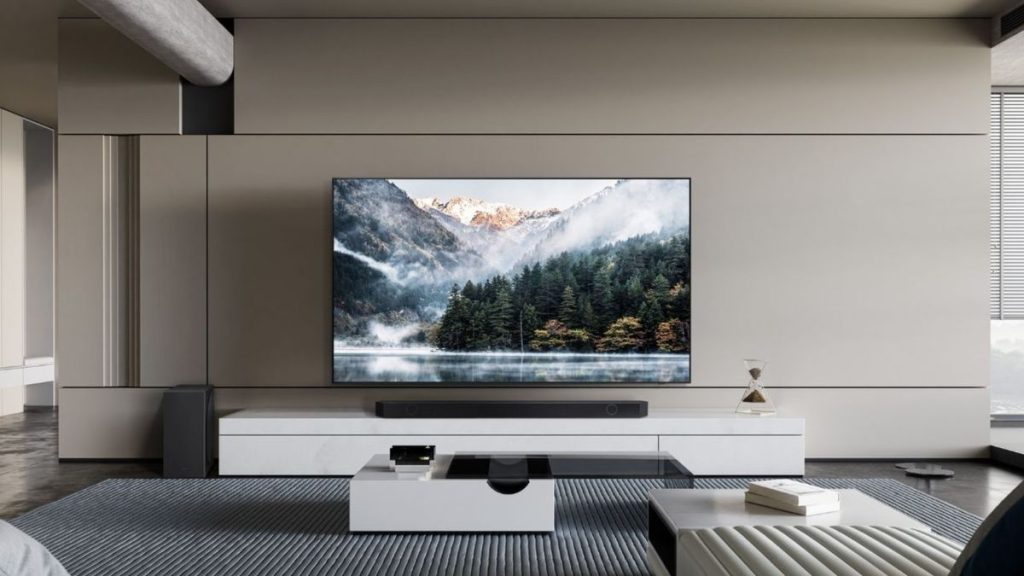It looks like the beginning of the end for QD-OLED TVs – Tom’s Guide

And that’s perfectly fine with me
When you purchase through links on our site, we may earn an affiliate commission. Here’s how it works.
The arrival of QD-OLED TVs just three years ago struck the industry like a lightning bolt. The Samsung S95B and the Sony A95K blended the benefits of quantum dots with the many advantages of OLED — a best-of-both-worlds scenario that proved to be every bit as promising as it initially seemed. The technology allowed for industry-leading color volume and brought OLED brightness closer to that of competitive Mini-LED TVs.Now, at the start of 2025, there are signs that the king of display technology is readying to pass the crown. LG Display’s Primary RGB Tandem OLED has arrived, and while we won’t know for a few months whether it’s as impressive as all of us suspect, there are already signs that the industry is getting ready to move on from QD-OLED.And you know what? I’m OK with that.Since 2022, while Samsung and Sony continued to place QD-OLED displays at the top of their respective OLED TV lineups, LG zagged in a different direction.LG Display’s answer to QD-OLED, Micro Lens Array (MLA) technology, allowed LG OLEDs to compete with QD-OLED TVs without leveraging panels from Samsung Display. MLA-equipped TVs — like the LG G4 OLED — use fantastically small lenses to refocus light, allowing for a much brighter OLED experience. MLA OLEDs can’t compete with the bright, pure color of QD-OLEDs, but the increase in peak brightness — combined with LG’s precise engineering — was enough for the TVs equipped with MLA to stand toe to toe with the likes of Samsung and Sony flagships.We’ve been living in this era ever since; if you want one of the best OLED TVs money can buy, you’ll have to choose between a QD-OLED (like the Samsung S95D) or an MLA-equipped OLED (like the LG G4 or the Panasonic Z95A).But times are changing, and they’re changing as soon as this year.MLA is set to whither on the vine.Both TV brands that have previously made use of LG Display’s MLA OLED displays, LG and Panasonic, are currently shipping flagship OLEDs that tap Primary RGB Tandem technology (otherwise known as four-stack OLED). Unless something changes in the future, it would appear as though MLA is set to whither on the vine.The first four-stack OLED TVs to hit shelves are the LG G5 OLED and the Panasonic Z95B. According to LG Display, four-stack OLEDs come with a bevy of benefits over previous generations, including a 33% increase in peak brightness, a 40% increase in color brightness and — somewhat surprisingly — a 20% decrease in power consumption.So why do I think the sudden replacement of MLA tech spells curtains for QD-OLED? It’s what I see in the details of Samsung’s 2025 TV lineup.Samsung made waves at CES 2025 when it announced that its flagship OLED TV, the Samsung S95F, would be available in an 83-inch size. Crafty tech journalists quickly sussed out that, based on the 83-inch S95F’s subpixel structure, the panel was not of the QD-OLED variety. However, Samsung claims that all sizes of the S95F will perform the same — even the 83-inch model. If that’s true, I don’t see how the 83-inch S95F isn’t equipped with one of LG Display’s four-stack OLEDs.Of course, I’ve been wrong before and I certainly could be wrong here. We’ll have to wait and see.Lately, though, there are whispers that Sony is dropping QD-OLED panels for 2025 and beyond. To be clear, these are completely unsubstantiated rumors — industry chatter, message board posts, things of that nature.If Sony really does abandon QD-OLED in favor of four-stack, it will be a sign that the tides are turning.That said, it would make sense to move on from QD-OLED if LG Display’s four-stack displays really are as advantageous as they seem to be. And it’s especially sensible if the costs of doing business are lower with this new panel type. If Sony really does abandon QD-OLED in favor of four-stack, it will be a sign that the tides are turning.Frankly, I welcome the change.In the age of useless AI-based TV features, I yearn for any technology that can actually make TVs look better and last longer. Primary RGB Tandem OLED panels may not be perfect, but if their arrival forces the biggest brands in the business to deliver better-looking panels that consume less power, well then, that’s a win-win scenario.If this really is the beginning of the end of QD-OLED in the TV space, its legacy will be that of an essential link between garden-variety OLEDs and better-performing, more-efficient models. With any luck, they’ll look better, they’ll last longer, and in a matter of years their cost will come down enough that more folks will see them as a viable option. It’s the type of iteration that ought to be celebrated in an industry that’s more prone to empty promises than ever.Get instant access to breaking news, the hottest reviews, great deals and helpful tips.Michael Desjardin is a Senior Editor for TVs at Tom’s Guide. He’s been testing and tinkering with TVs professionally for over a decade, previously for Reviewed and USA Today. Michael graduated from Emerson College where he studied media production and screenwriting. He loves cooking, zoning out to ambient music, and getting way too invested in the Red Sox. He considers himself living proof that TV doesn’t necessarily rot your brain.I’d love for Samsung to make The Frame OLED — here’s why it hasn’t happenedI turned my living room into a movie theater — here’s howSpotify Premium subscribers report hearing ads — here’s Spotify’s response
Tom’s Guide is part of Future US Inc, an international media group and leading digital publisher. Visit our corporate site.
©
Future US, Inc. Full 7th Floor, 130 West 42nd Street,
New York,
NY 10036.
Source: https://www.tomsguide.com/tvs/it-looks-like-the-beginning-of-the-end-for-qd-oled-tvs



